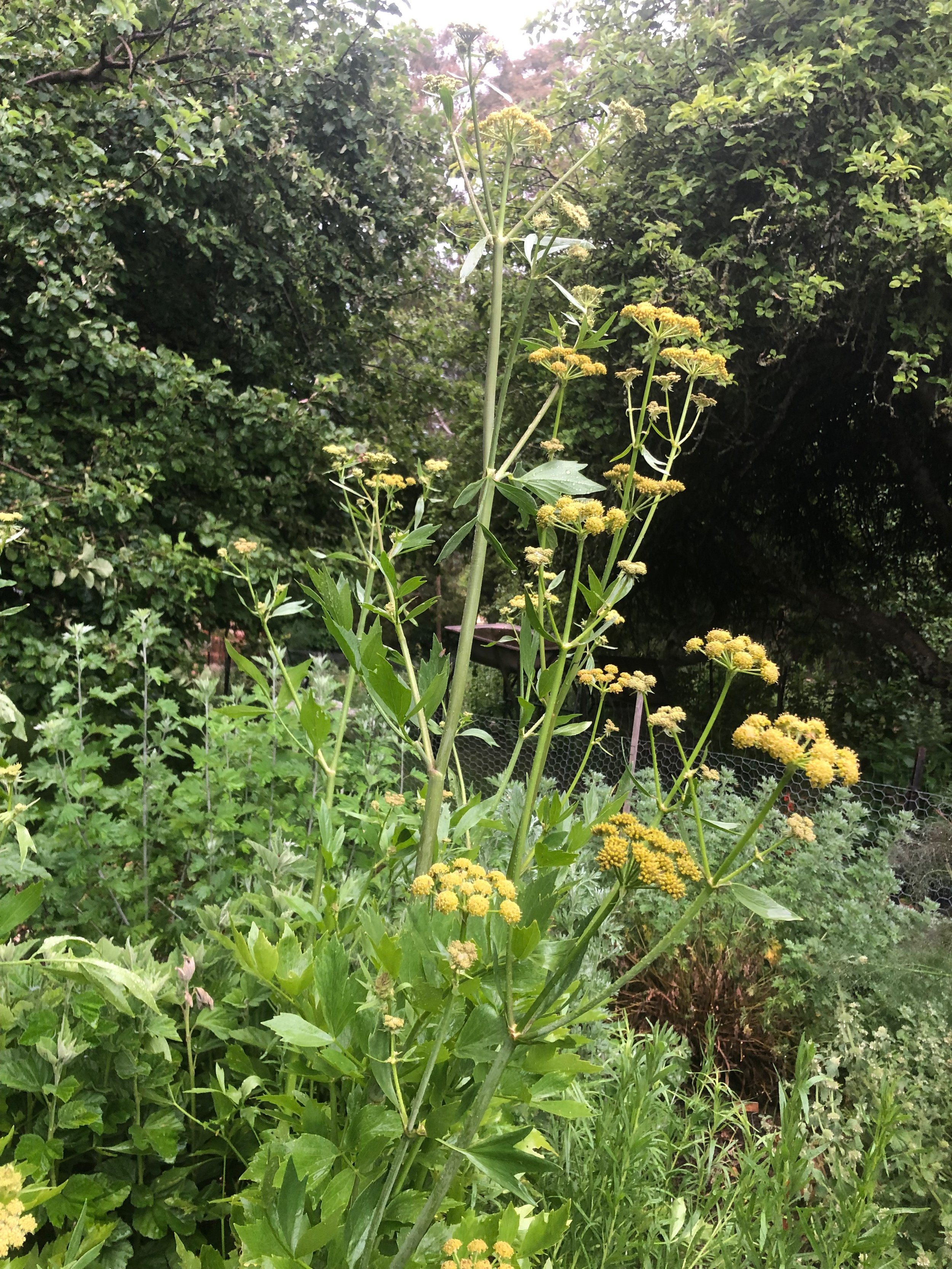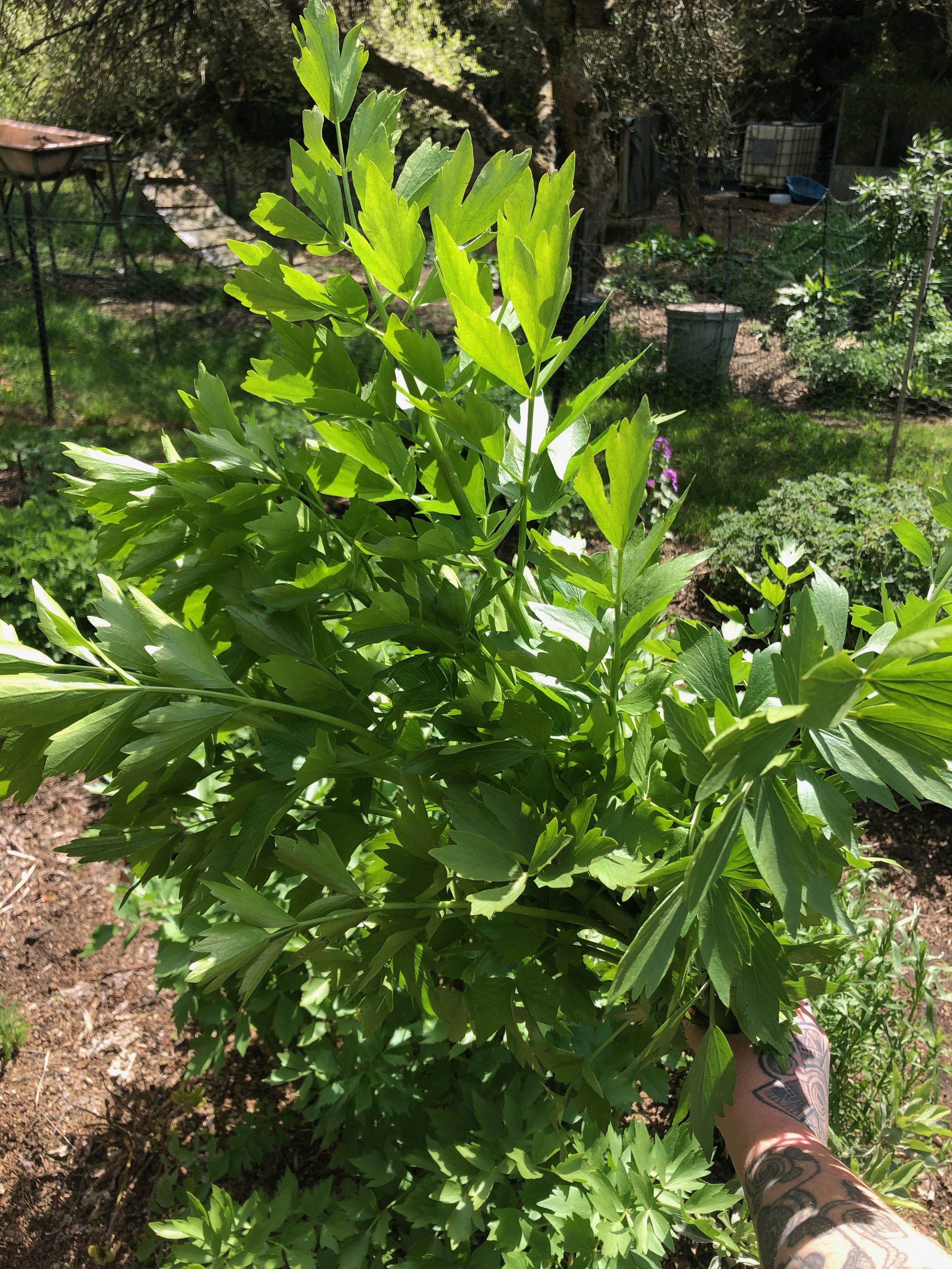 Image 1 of 4
Image 1 of 4

 Image 2 of 4
Image 2 of 4

 Image 3 of 4
Image 3 of 4

 Image 4 of 4
Image 4 of 4





Lovage Seeds
Lovage (Levisticum officinale)
Description:
Lovage is a perennial herb that belongs to the Apiaceae family, native to Europe and parts of southwestern Asia. Lovage is a tall and robust herb that can reach heights of 4 to 6 feet (1.2 to 1.8m). It features bright green, deeply divided, and serrated leaves that resemble those of celery. The leaves have a strong, aromatic flavour similar to celery, but more intense and aniseed-y. Lovage produces clusters of small yellow flowers that are arranged in umbels. The plant has a long history of culinary and medicinal use due to its distinct flavour and potential health benefits.
Growing Conditions:
Climate: cool-temperate climates; prefers mild summers and cool winters.
Position: full sun to partial shade with at least 4 to 6 hours of direct sunlight per day; some shade during the hottest part of the day can be beneficial in warmer climates.
Soil: well-draining, fertile and loamy soil but can also tolerate sandy or clay soil; ideal soil pH range is slightly acidic to neutral (around 6.0 to 7.5).
Water: moderate water needs; water the plant regularly to keep the soil consistently moist but not waterlogged; somewhat drought-tolerant once established.
Spacing: space the plants approximately 18 to 24 inches (45 to 60cm) apart to allow them room to spread.
Propagation: sow the seeds indoors 6 to 8 weeks before the last frost date or directly into the garden bed or seed flat/pots in spring or autumn; press the seeds into the surface or cover lightly with soil (light-dependent germination usually within 7 to 21 days); alternatively, divide mature plants in spring or autumn by carefully separating the root clumps and replanting them.
Harvest:
Leaves: harvest the leaves and stems when they are mature and fully developed, typically during the growing season. The leaves have the strongest flavour before the plant flowers. Harvest in the morning when the plant is dry from dew.
Root: the root is typically harvested in autumn or early spring when the plant is dormant. Harvesting the root is best done in the plant's second or third year when the root has developed fully.
50 seeds per pack
Lovage (Levisticum officinale)
Description:
Lovage is a perennial herb that belongs to the Apiaceae family, native to Europe and parts of southwestern Asia. Lovage is a tall and robust herb that can reach heights of 4 to 6 feet (1.2 to 1.8m). It features bright green, deeply divided, and serrated leaves that resemble those of celery. The leaves have a strong, aromatic flavour similar to celery, but more intense and aniseed-y. Lovage produces clusters of small yellow flowers that are arranged in umbels. The plant has a long history of culinary and medicinal use due to its distinct flavour and potential health benefits.
Growing Conditions:
Climate: cool-temperate climates; prefers mild summers and cool winters.
Position: full sun to partial shade with at least 4 to 6 hours of direct sunlight per day; some shade during the hottest part of the day can be beneficial in warmer climates.
Soil: well-draining, fertile and loamy soil but can also tolerate sandy or clay soil; ideal soil pH range is slightly acidic to neutral (around 6.0 to 7.5).
Water: moderate water needs; water the plant regularly to keep the soil consistently moist but not waterlogged; somewhat drought-tolerant once established.
Spacing: space the plants approximately 18 to 24 inches (45 to 60cm) apart to allow them room to spread.
Propagation: sow the seeds indoors 6 to 8 weeks before the last frost date or directly into the garden bed or seed flat/pots in spring or autumn; press the seeds into the surface or cover lightly with soil (light-dependent germination usually within 7 to 21 days); alternatively, divide mature plants in spring or autumn by carefully separating the root clumps and replanting them.
Harvest:
Leaves: harvest the leaves and stems when they are mature and fully developed, typically during the growing season. The leaves have the strongest flavour before the plant flowers. Harvest in the morning when the plant is dry from dew.
Root: the root is typically harvested in autumn or early spring when the plant is dormant. Harvesting the root is best done in the plant's second or third year when the root has developed fully.
50 seeds per pack
Lovage (Levisticum officinale)
Description:
Lovage is a perennial herb that belongs to the Apiaceae family, native to Europe and parts of southwestern Asia. Lovage is a tall and robust herb that can reach heights of 4 to 6 feet (1.2 to 1.8m). It features bright green, deeply divided, and serrated leaves that resemble those of celery. The leaves have a strong, aromatic flavour similar to celery, but more intense and aniseed-y. Lovage produces clusters of small yellow flowers that are arranged in umbels. The plant has a long history of culinary and medicinal use due to its distinct flavour and potential health benefits.
Growing Conditions:
Climate: cool-temperate climates; prefers mild summers and cool winters.
Position: full sun to partial shade with at least 4 to 6 hours of direct sunlight per day; some shade during the hottest part of the day can be beneficial in warmer climates.
Soil: well-draining, fertile and loamy soil but can also tolerate sandy or clay soil; ideal soil pH range is slightly acidic to neutral (around 6.0 to 7.5).
Water: moderate water needs; water the plant regularly to keep the soil consistently moist but not waterlogged; somewhat drought-tolerant once established.
Spacing: space the plants approximately 18 to 24 inches (45 to 60cm) apart to allow them room to spread.
Propagation: sow the seeds indoors 6 to 8 weeks before the last frost date or directly into the garden bed or seed flat/pots in spring or autumn; press the seeds into the surface or cover lightly with soil (light-dependent germination usually within 7 to 21 days); alternatively, divide mature plants in spring or autumn by carefully separating the root clumps and replanting them.
Harvest:
Leaves: harvest the leaves and stems when they are mature and fully developed, typically during the growing season. The leaves have the strongest flavour before the plant flowers. Harvest in the morning when the plant is dry from dew.
Root: the root is typically harvested in autumn or early spring when the plant is dormant. Harvesting the root is best done in the plant's second or third year when the root has developed fully.
50 seeds per pack